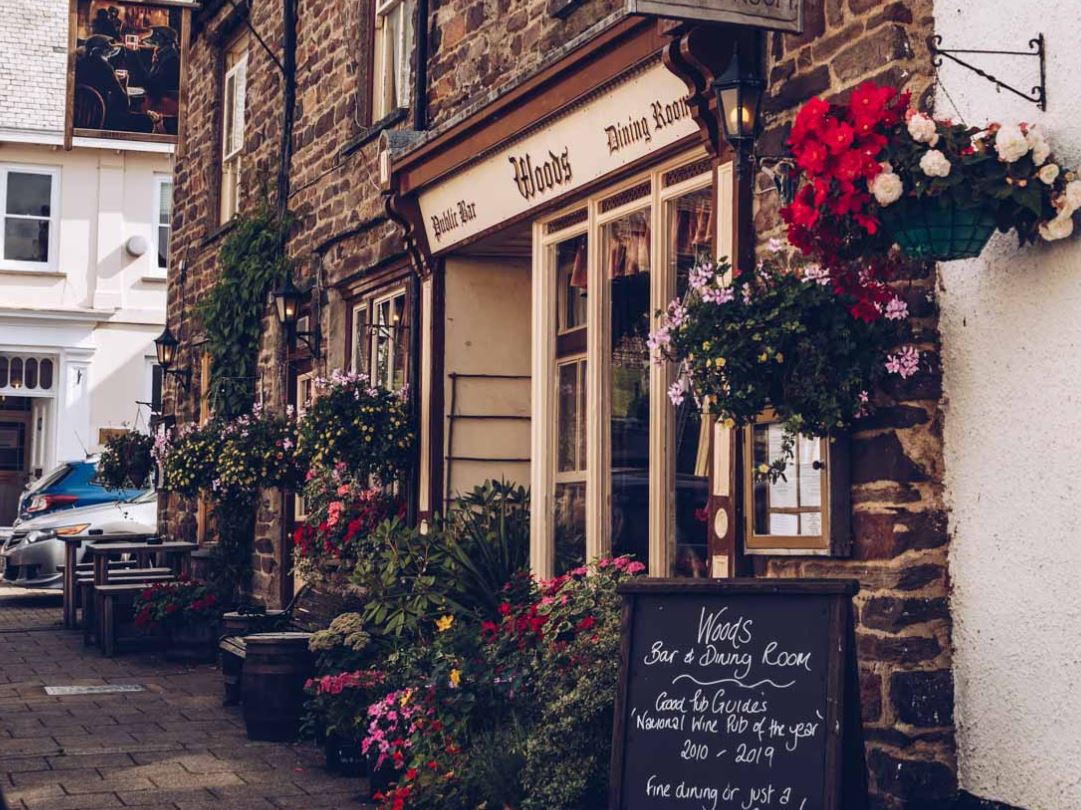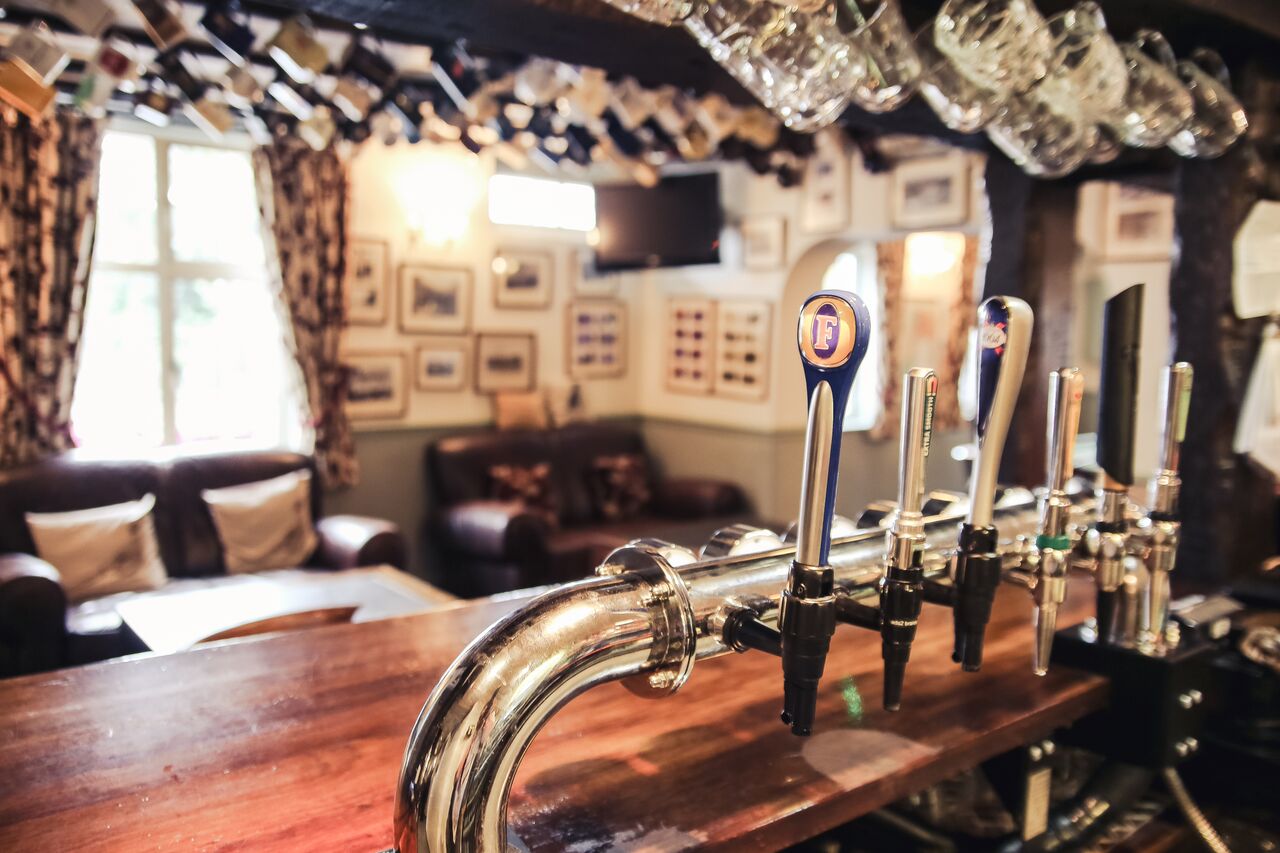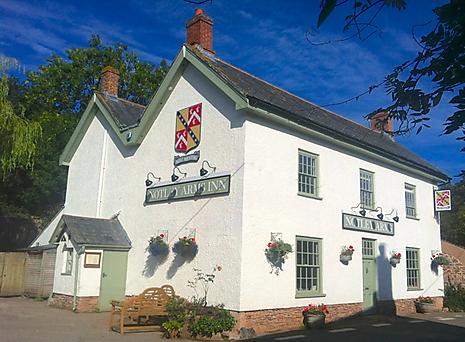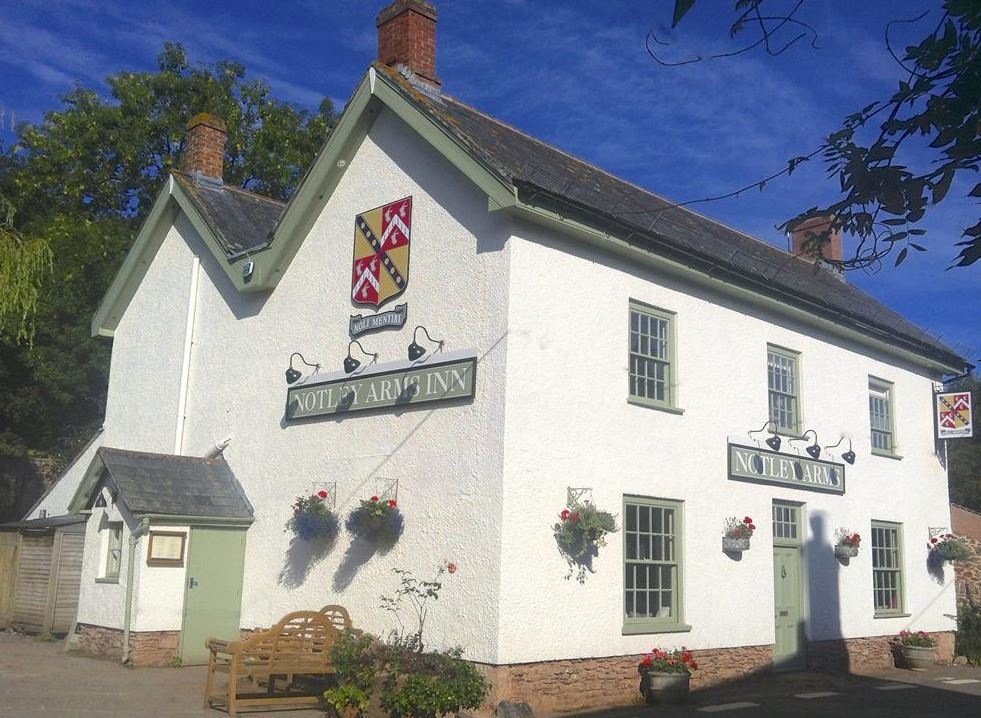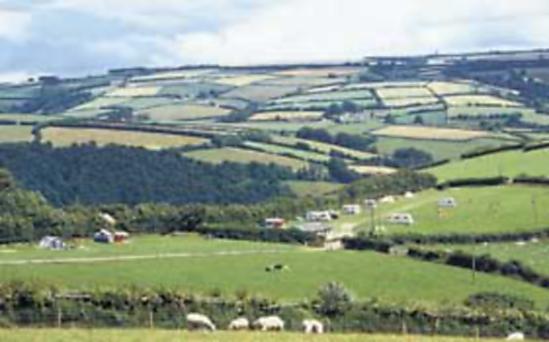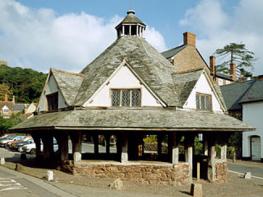Halse Farm is a peaceful little site on Exmoor overlooking a wooded valley with glorious views.…
Winsford Hill

High above Tarr Steps
7.5 miles (12.1kms)
About the walk
Winsford Hill lies near the edge of the Exmoor plateau, separating the valleys of the Barle and Exe and, rising some 750 feet (229m) above the rivers, opens impressive panoramas across the landscape. Readily distinguished is Dunkery Hill to the north, while to the south east and south west respectively are the more distant ranges of the Blackdown Hills and the wild uplands of Dartmoor.
The top of the hill is crowned by the Wambarrows, a group of three Bronze Age tumuli that are perhaps 3,500 years old. Local legend tells that they contain a treasure that is guarded by a large black hound with glowing eyes, the mere sight of which is a portent of impending disaster.
Caractacus Stone
The Wambarrows are not the only ancient monuments surviving on these hills. A little further along the route to the east is the Caractacus Stone protected from the elements since 1906 by a small stone shelter, itself a scheduled monument. Thought to date from the early 6th century, it bears a worn Latin inscription, CARAACI NEPVS, which translates as 'descendant of Caractacus'. Caractacus had lived some 450 years earlier; a warrior chieftain who rallied the British tribes of what is now Wales in a guerrilla campaign against the Roman advance. After eventual defeat, he sought protection under Cartimandua, queen of the Brigantes. But having sworn allegiance to the conquerors, she turned him in and Caractacus was taken to Rome to be humiliated before the Emperor. However, after making an impassioned speech to Claudius his execution was stayed and he lived out the remainder of his life in the imperial city.
Tarr Steps
The final stage of the walk leads past the Tarr Steps, a 180ft (55m) clapper bridge spanning the River Barle. Built at least 3,000 years ago, it is the oldest surviving bridge in Europe and consists of 17 giant stone slabs, each weighing several tons and laid across a series of sturdy stepping stones. Upright slabs set against each of the piers act as cutwaters, but the bridge is not immune to flood damage and on occasions the massive slabs have been carried up to 50yds (46m) downstream.
Walk directions
Join the lane uphill towards Liscombe. Nearing the village, turn sharp left on a track signed to Knaplock. Entering a field corner, swing right through a gate and then left beside the hedge. Emerging at the top, follow a track left then bear right into the field far corner. Cross a stile and continue by the left hedge of two more fields to come out beside Higher Knaplock Farm.
The track ahead (signed 'Tarr Steps') winds to Knaplock Farm. Picking up signs to Comer's Gate, turn right through the yard and wind up between barns to a gate at the top. Bear left along a hedged track, passing through a couple of gates and crossing a stream. Swing right through an often-waterlogged section, shortly approaching a line of beech trees. Keep with the old track by the left bank, soon passing through a gate onto the edge of open moor. Before long, at a sign, the path arcs right to avoid a bog, rejoining the bank some 350yds (320m) further on. Where the boundary then curves left, rise ahead through gorse to a diminutive four-way signpost.
Go right towards The Punchbowl, climbing up the moor for 0.25 mile (400m). Ignore a path off right and continue to a second fork, about 100yds (91m) short of a lane. Bear right on a broad trod, paralleling the lane for 0.5 mile (800m). Watch for a narrow path leaving left to meet the road opposite a lay-by.
Cross and walk forward past Winsford Hill's trig column to a grass track and follow it right above The Punchbowl. Ignore a crossing track and then a path forking left, to continue over a gentle rise ahead. Go over a cross-path then curve right down to a lane opposite Folly House.
Swing right beside the road. Approaching a 'Give Way' sign, cross to a path that winds to the Caractacus Stone. Walk past the shelter and bear right to parallel a hedge bank. Follow it for 0.5 mile (800m), eventually curving left alongside a line of beech. Reaching a broad track, turn right at a sign to Mounsey Hill Gate. At a fork, branch left to the corner of a beech hedge and then bear right to pick up a path around the eastern flank of Draydon Knap. Later the way divides, fork right to emerge opposite a junction of lanes.
The lane opposite is signed to Tarr Steps and Liscombe. Immediately beyond a cattle grid, bear left on a track to Tarr Steps across the flank of Varle Hill. Branch right at a fork and ignore a later cross-path, eventually reaching a gate. Continue beyond, shortly losing height. Leaving the moor, the path steepens, ultimately dropping through birch to a bridleway. Head right down to the River Barle and turn right again to reach a lane beside Tarr Steps.
Head briefly up the lane below the Tarr Farm Inn, leaving just after a building on the right for a parallel field path that climbs back to the car park.
Additional information
Moorland paths and tracks, a short stretch along lane
Moorland and upland grazing
Keep dogs on leads near grazing animals
AA Walker's Map 13 Exmoor
Tarr Steps pay and display car park, 0.25 miles (400m) west of Liscombe (can be congested in summer)
At car park
WALKING IN SAFETY
Read our tips to look after yourself and the environment when following this walk.
Find out more
Also in the area
About the area
Discover Somerset
Somerset means ‘summer pastures’ – appropriate given that so much of this county remains rural and unspoiled. Ever popular areas to visit are the limestone and red sandstone Mendip Hills rising to over 1,000 feet, and by complete contrast, to the south and southwest, the flat landscape of the Somerset Levels. Descend to the Somerset Levels, an evocative lowland landscape that was the setting for the Battle of Sedgemoor in 1685. In the depths of winter this is a desolate place and famously prone to extensive flooding. There is also a palpable sense of the distant past among these fields and scattered communities. It is claimed that Alfred the Great retreated here after his defeat by the Danes.
Away from the flat country are the Quantocks, once the haunt of poets Samuel Taylor Coleridge and William Wordsworth. The Quantocks are noted for their gentle slopes, heather-covered moorland expanses and red deer. From the summit, the Bristol Channel is visible where it meets the Severn Estuary. So much of this hilly landscape has a timeless quality about it and large areas have hardly changed since Coleridge and Wordsworth’s day.
Nearby stays
Restaurants and Pubs
Nearby experiences
Recommended things to do
Why choose Rated Trips?
Your trusted guide to rated places across the UK
The best coverage
Discover more than 15,000 professionally rated places to stay, eat and visit from across the UK and Ireland.
Quality assured
Choose a place to stay safe in the knowledge that it has been expertly assessed by trained assessors.
Plan your next trip
Search by location or the type of place you're visiting to find your next ideal holiday experience.
Travel inspiration
Read our articles, city guides and recommended things to do for inspiration. We're here to help you explore the UK.

